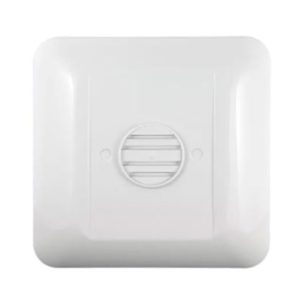
Variable Refrigerant Flow (VRF)/Variable Refrigerant Volume (VRV) are one and the same. While being popular in Asia and Europe for some time, these systems have just recently started growing traction in the US market. A VRF system is a high-volume refrigerant cooling and heating system consisting of outdoor condensing units connected to multiple indoor fan-coil units via refrigerant piping to provide cooling and heating to individual zones. These highly efficient systems provide design flexibility, cost-effective installation, and energy savings.
Common VRF Applications

Apartment

Restaurant

Hotel

Conference Room
Gases Found
Refrigerant
R-32
R134A
R404A
R407C
R410A
R1234YF
R1234ZE
Others
Overview
Why is a gas detector important?
The Macurco RD-VRF Refrigerant Gas Detector is designed to provide continuous refrigerant monitoring in applications that pose an oxygen-depleting environment in the event of a refrigerant leak and accumulation that pose a significant safety issue. Having a VRF detector provides advanced warning via low detection alarming and notification.
Where would one find a VRF system?
Typical applications include hotel rooms, senior care, dorms, hospitals, commercial offices, classrooms, and other occupied spaces taking advantage of the cost-saving benefits of VRF technologies for heating and cooling.
How does the RD-VRF detector work?
The RD-VRF Refrigerant Gas Detector comes standard with 2 alarm levels to activate two onboard relays that can be used to control valves to isolate or shutdown refrigerant supply lines, engage exhaust fans, provide notification alarms, and communicate to a Building Management System (BMS).
What standard guides VRF systems?
ASHRAE 15 specifies safe, design, construction, installation, and operation of refrigeration systems. The standard applies to the design, construction, test, installation, operation, and inspection of mechanical and absorption refrigeration systems, including heat pump systems used in stationary applications.
VRF Safety Standards
The safety classification of R410A in Standard 34 is group 1 (meaning non-toxic and non-flammable), it has no ozone depletion potential, and it meets the stringent mandates of both the Montreal Protocol and the U.S. Environmental Protection Agency. However, due to the ability to displace oxygen, Addendum L to ASHRAE Standard 34-2010 has established the maximum Refrigerant Concentration Limit (RCL) to 26 lbs/1000 ft3 of room volume for occupied spaces, for Institutional Occupancies, the limit is reduced to 50% (13 lbs. /1000 ft3). Since the indoor unit fan coils are in direct contact with the air being distributed, the system is classified as a Direct System according to Standard 15. By definition, a Direct System is also classified as a High Probability system, meaning that a leak of refrigerant can potentially enter into occupied space.


